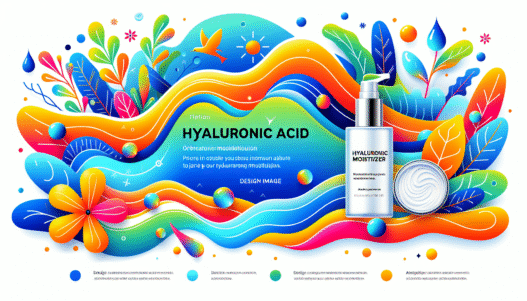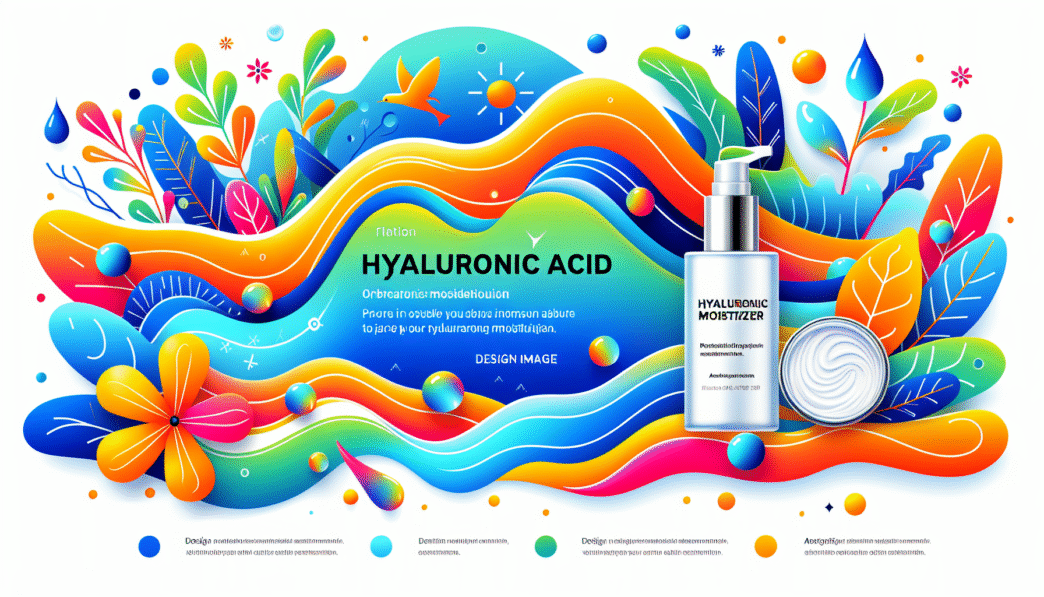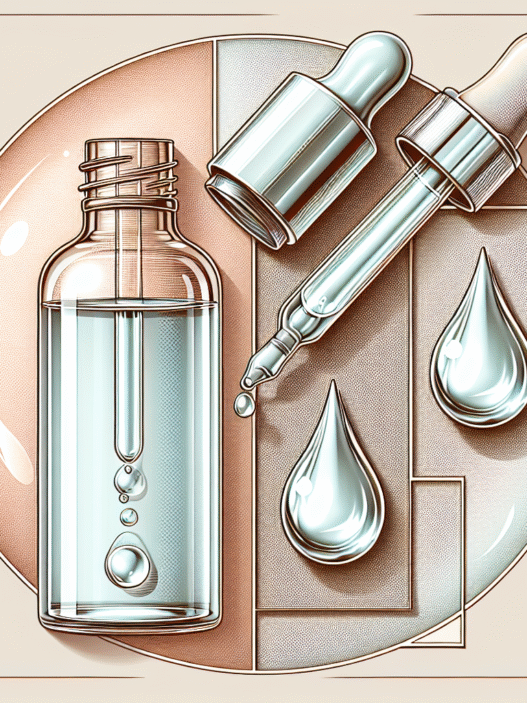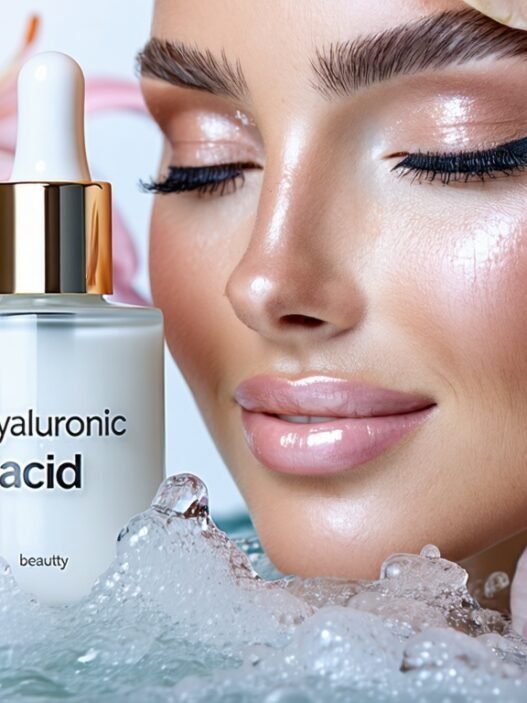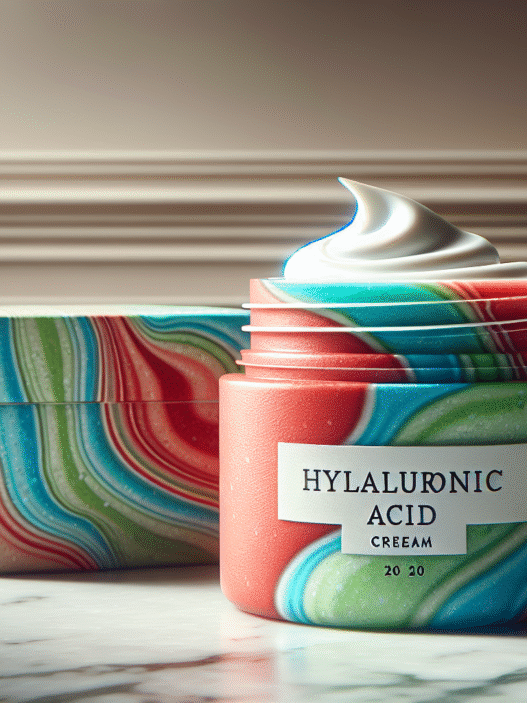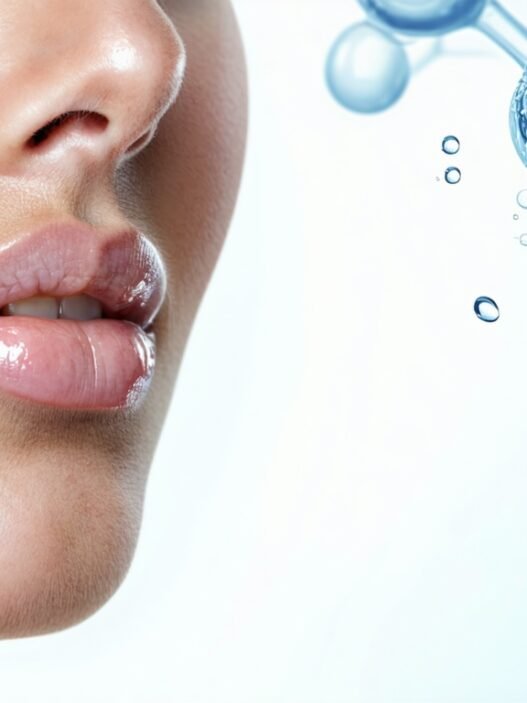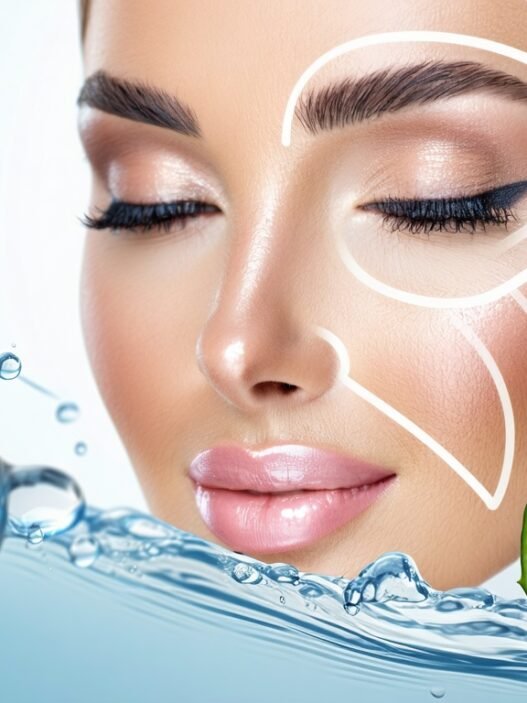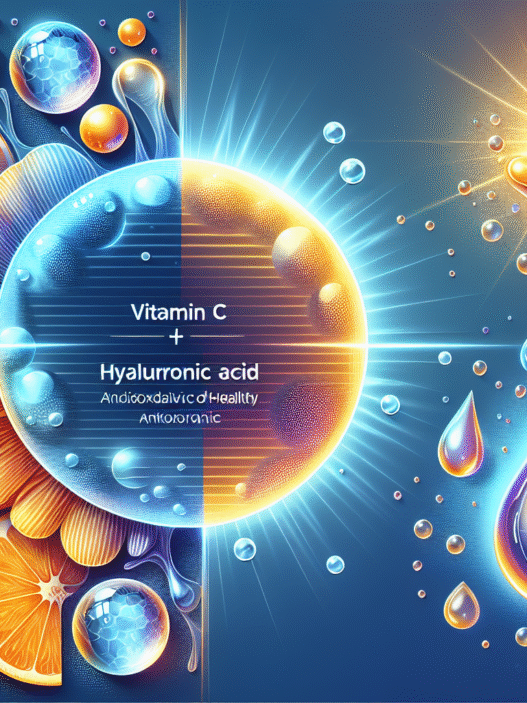Understanding Hyaluronic Acid
Hyaluronic acid, also known as hyaluronan or hyaluronate, is a naturally occurring substance that plays a significant role in maintaining hydration and elasticity in the skin. Understanding its natural production and sourcing is vital for skincare enthusiasts looking to benefit from this ingredient in their routines.
Natural Production in the Body
The body produces hyaluronic acid naturally, predominantly located in areas such as the eyes, joints, and skin. It is a gooey, slippery substance that helps retain moisture and provides cushioning to tissues. Approximately 50% of the total hyaluronic acid in the body is found in the skin. As individuals age, the concentration and molecular weight of hyaluronic acid decreases significantly, which can contribute to signs of aging like dryness and loss of elasticity (Cosmedica Skincare).
| Age Group | Approximate Hyaluronic Acid Concentration |
|---|---|
| Young Adults (20s) | High |
| Middle Age (40s) | Moderate |
| Older Adults (60+) | Low |
Sourcing and Manufacturing
The process of sourcing and manufacturing hyaluronic acid can involve various methods. Commonly, it is derived from fermenting specific types of bacteria or, historically, from rooster combs. This versatility in sourcing contributes to the wide availability of hyaluronic acid products in the market, including hyaluronic acid serums and creams.
Hyaluronic acid is now widely used in skincare due to its remarkable ability to retain moisture. With its structures being easily incorporated into various topical formulations, it offers a multitude of benefits, especially for those looking for anti-aging properties. Understanding how hyaluronic acid is produced and sourced reveals its significance in maintaining youthful skin and highlights its effectiveness as a key ingredient in many beauty products.
Hyaluronic Acid Benefits
Hyaluronic acid is celebrated for its numerous benefits, particularly in skincare and anti-aging treatments. It plays a significant role in skin hydration, long-term health, and even acne treatment.
Skin Moisturizing Properties
Hyaluronic acid is renowned for its exceptional ability to retain moisture. It can hold about 1.5 gallons of water per quarter-teaspoon, which is vital for keeping skin hydrated and plump (Cleveland Clinic). This property makes it a key component in many moisturizing products, providing deep hydration and helping to reduce the appearance of fine lines and wrinkles.
| Moisture Retention | Water Volume Held |
|---|---|
| Hyaluronic Acid (per 1/4 tsp) | 1.5 gallons |
This makes hyaluronic acid a staple for those seeking hydrated, youthful skin.
Long-Term Effects on Skin Health
The benefits of using hyaluronic acid extend beyond immediate hydration. Long-term use of hyaluronic acid serum or supplements can lead to enhanced overall skin health, flexibility, and elasticity. By fortifying the skin’s natural barriers, hyaluronic acid helps lock in moisture, slow down the deterioration of the lipid barrier, and protect against environmental age-factors and pollutants (Cosmedica Skincare). Consistent use of hyaluronic acid can result in a more youthful appearance over time.
Use in Acne Treatment
Interestingly, hyaluronic acid is also utilized in treating acne. It is often incorporated in fillers to repair or conceal acne scars, aiding in the overall appearance and texture of the skin. Limited research has explored combining hyaluronic acid with other medications in acne treatment, but its moisturizing properties can help create an environment conducive to healing. This makes hyaluronic acid not only beneficial for hydration but also for improving skin texture in conditions like acne.
In summary, the benefits of hyaluronic acid extend across various aspects of skin health, making it an essential ingredient in products like hyaluronic acid serum and hyaluronic acid cream. By integrating it into skincare routines, individuals can enjoy hydrated, youthful skin while also addressing specific concerns such as acne.
Types of Hyaluronic Acid Products
Hyaluronic acid products are widely available and can be categorized into over-the-counter options and prescription products. Each type serves different needs and purposes for skincare enthusiasts seeking to enhance their skin health.
Over-the-Counter Options
Over-the-counter hyaluronic acid products include serums, creams, and eye care products. These formulations are generally safe for topical application. They can provide immediate hydration and offer various benefits for skin health.
| Product Type | Benefits |
|---|---|
| Hyaluronic Acid Serum | Deep hydration, plumping appearance, anti-aging effects |
| Hyaluronic Acid Cream | Moisturizing, improving skin texture, protecting against external aggressors |
| Eye Care Products | Reducing puffiness, hydrating delicate skin, minimizing fine lines |
Research indicates that topical hyaluronic acid is effective and well-tolerated for skin aging, making it a popular choice after facial or post-surgical rejuvenation procedures (Medical News Today). Many beauty enthusiasts consider hyaluronic acid serums among the best hydrators for maintaining youthful skin.
Prescription Products and Safety Measures
Prescription hyaluronic acid products, such as injections or fillers, are typically used for deeper skin issues, like wrinkles, volume loss, or severe dehydration. These treatments are administered by licensed professionals and are designed to provide longer-lasting results compared to over-the-counter options.
When considering any form of hyaluronic acid, individuals should follow safety measures:
- Consult a healthcare provider before starting oral supplements to determine the right dosage.
- Discuss potential interactions and suitability of hyaluronic acid fillers with practitioners to ensure safe application and effectiveness.
Both prescription and non-prescription products can enhance the skin’s moisture retention, boost elasticity, and contribute to an overall youthful appearance (Cosmedica Skincare). For information on additional skincare support, explore articles on hyaluronic acid supplements and hyaluronic acid injections.
By selecting the right hyaluronic acid products, beauty enthusiasts can effectively address skin hydration and achieve a more youthful complexion. Seek out options that combine hyaluronic acid with complementary ingredients for enhanced results. To learn more about these combinations, visit our section on hyaluronic acid and skincare.
Hyaluronic Acid in Anti-Aging Skincare
Using hyaluronic acid in anti-aging skincare can greatly boost overall skin health while combating signs of aging. When paired with complementary ingredients, hyaluronic acid enhances its effectiveness and provides optimal results for users.
Complementary Ingredients Overview
Several skincare ingredients work synergistically with hyaluronic acid to maximize hydration and skin rejuvenation. These combinations can enhance moisture retention and improve skin texture. Some notable complimentary ingredients include:
| Ingredient | Benefits |
|---|---|
| Retinol | Helps reduce wrinkles and fine lines; hyaluronic acid mitigates side effects like dryness. (Skin Software) |
| Glycolic Acid | Aids in exfoliation and skin renewal; hyaluronic acid helps manage irritation from glycolic acid. (Skin Software) |
| Ceramides | Essential for skin barrier protection and moisture retention. Ideal for addressing hydration issues. (Skin Software) |
| Acetyl Hexapeptide | Enhances penetration of hyaluronic acid into deeper skin layers for better hydration. (Skin Software) |
Hyaluronic Acid and Retinol Combination
The combination of hyaluronic acid and retinol is particularly effective for skin rejuvenation. Retinol is renowned for its ability to combat wrinkles and improve skin texture. However, users may experience side effects such as dryness and irritation. This is where hyaluronic acid plays a crucial role by providing intense hydration and promoting healing.
Mixing retinol with hyaluronic acid allows for a balanced approach to anti-aging, ensuring that the skin remains plump and moist while benefiting from the resurfacing qualities of retinol. For those interested in other products containing hyaluronic acid, consider exploring our hyaluronic acid moisturizer.
Synergies with Other Skincare Ingredients
Hyaluronic acid is versatile, pairing well with numerous other active ingredients to enhance skincare routines. For example, combining it with ceramides can greatly increase moisture retention and protection against environmental stressors, leading to healthier skin. Additionally, glycolic acid works effectively with hyaluronic acid to provide hydration while ensuring proper skin exfoliation. Overall, understanding the synergy between different ingredients helps users select the most effective products.
Exploring various combinations of hyaluronic acid with other ingredients can lead to radiant, youthful skin while addressing multiple skin issues. Embracing these synergistic relationships is key to unlocking the full potential of skincare routines. To learn more about the benefits of hyaluronic acid, visit our section on hyaluronic acid benefits.
Hyaluronic Acid for Skin Hydration
Hyaluronic acid is renowned for its remarkable ability to provide hydration to the skin, effectively combating dryness and promoting a youthful appearance. In this section, we will explore its water-binding capacity, penetration and moisture retention properties, and its impact on skin elasticity and plumpness.
Water-Binding Capacity
Hyaluronic acid can bind up to 1,000 times its weight in water, making it an exceptionally effective humectant. This allows it to hold water molecules on the skin’s surface, helping to keep the skin hydrated and prevent dehydration by slowing down the rate of water evaporation (Healthline).
The concentration of hyaluronic acid in various products can vary. Here is a simple breakdown of its water-binding capabilities at different molecular weights:
| Molecular Weight (kDa) | Water-Binding Capacity |
|---|---|
| Below 50 | Lower effective binding |
| 50 – 130 | Effective hydration and skin elasticity |
| 130 – 1,000 | Optimal humectant properties |
Penetration and Moisture Retention
The effectiveness of hyaluronic acid in retaining moisture depends on its ability to penetrate the skin. Research suggests that hyaluronic acid with a molecular weight between 50 and 130 kDa is most beneficial for the skin. In particular, the 130 kDa version has been found to significantly increase skin elasticity—up to 20 percent after one month of use (Healthline).
Additionally, hyaluronic acid penetrates multiple layers of the skin, providing essential moisture to skin cells. This rejuvenating moisture contributes to an overall improved skin texture and helps to reduce the appearance of fine lines and wrinkles.
Skin Elasticity and Plumpness
The ability of hyaluronic acid to enhance skin elasticity and plumpness is well-documented. Treatment with formulations containing 130 kDa hyaluronic acid has shown substantial improvements in skin elasticity, wrinkle depth, and roughness within 60 days (Healthline).
Incorporating a hyaluronic acid moisturizer into a skincare routine can lead to tighter and firmer skin, giving a more youthful appearance as it fills the skin with moisture. This hydration induces a natural plumping effect, making it an ideal choice for those looking to maintain a youthful and vibrant skin texture.
For those interested in how hyaluronic acid interacts with other skincare components, check out our article on hyaluronic acid and collagen to learn more about its synergistic benefits.
Latest Research and Studies
Hyaluronic acid has gained significant attention for its multifaceted benefits in skincare. Recent studies highlight the effectiveness of both topical applications and oral supplementation.
Topical Applications for Skin Aging
The latest research indicates that topical hyaluronic acid is a powerful ally in skin aging. A 2022 review concluded that it is an effective and well-tolerated treatment for individuals undergoing facial or postsurgical rejuvenation procedures. This suggests that incorporating a hyaluronic acid moisturizer can improve skin appearance and hydration post-treatment.
Oral Supplementation for Skin Health
Recent studies have also explored the benefits of oral supplementation of hyaluronic acid. A 2023 study involving 123 females across various ages and skin types demonstrated that oral hyaluronic acid significantly enhanced skin hydration, improved skin tone, and increased epidermal thickness. This reinforces the idea that not only topical products but also hyaluronic acid supplements can play a vital role in maintaining healthy skin.
Wound Healing and Medicinal Uses
In addition to its cosmetic benefits, hyaluronic acid shows promise in medicinal applications, particularly in wound healing. A 2022 review suggested that topical hyaluronic acid applications might assist in healing minor wounds such as burns, as well as more severe wounds, including postsurgical scars. Supporting this, a 2019 animal study indicated that a gel containing hyaluronic acid contributed to wound healing by preventing bacterial infections while moisturizing the affected area. This capability makes it a beneficial ingredient in many hyaluronic acid creams designed for recovery.
These findings highlight the versatility of hyaluronic acid in skincare, from its anti-aging properties to its wound healing capabilities, proving it essential for those seeking to enhance their skin’s appearance and health. For a deeper understanding of the benefits, readers might explore our article on hyaluronic acid benefits.










